In Roman times Thuban had been located at the right ascension
line for the 'September equinox, i.e. to a place 100 days before the end of
'December:
 |
 |
 |
 |
 |
|
Cb1-1 (393) |
Cb1-2 |
Cb1-3 |
Cb1-4 (396) |
Cb1-5 |
|
CLOSE
TO THE SUN: |
|
April 17 (91 +
16)
Al Sharatain-1 /
Ashvini-1 /
Bond-16 (Dog) /
Mahrū-sha-rishu-ku-1 (Front of the Head of Ku)
SEGIN =
ε Cassiopeia, MESARTHIM = γ Arietis, ψ Phoenicis
(27.2),
SHERATAN (Pair of Signs) = β Arietis,
φ Phoenicis (27.4)
*351.0 = *27.4 - *41.4 |
18 (108)
ι Arietis (28.0), λ Arietis (28.2), υ Ceti (28.8) |
19
ALRISHA (The Knot) = α Piscium,
χ Phoenicis (29.2),
ε Trianguli (29.4), ALAMAK (Caracal)
= γ Andromedae
(29.7)
*353.0 = *29.4 - *41.4 |
20
Arku-sha-rishu-ku-2 (Back of the Head of Ku)
2h (30.4)
κ Arietis (30.3),
HAMAL (Sheep) = α Arietis
(30.5)
ALKES (α
Crateris) |
21 (111)
DELTOTUM = β Trianguli
(31.2), ι Trianguli (31.7), η Arietis (31.9) |
|
Gregorian equinox |
'March 22 (81) |
23 (107 - 29) |
24 |
Julian equinox |
|
CLOSE TO THE FULL MOON: |
|
MUPHRID (Solitary Star) = η Bootis
(210.1), ζ Centauri (210.3) |
φ Centauri (211.0), υ¹ Centauri (211.1), υ² Centauri
(211.8), τ Virginis (211.9) |
AGENA (At the Knee) = β Centauri
(212.1), θ Apodis (212.5),
THUBAN (Dragon) = α Draconis
(212.8) |
14h (213.1)
π Hydrae, χ Centauri (213.0),
MENKENT
(Shoulder of the Centaur) = θ Centauri
(213.1) |
Neck-2 (Dragon)
ASELLUS
TERTIUS (3rd Ass Colt) = κ Bootis, κ Virginis, 14
Bootis
(214.8) |
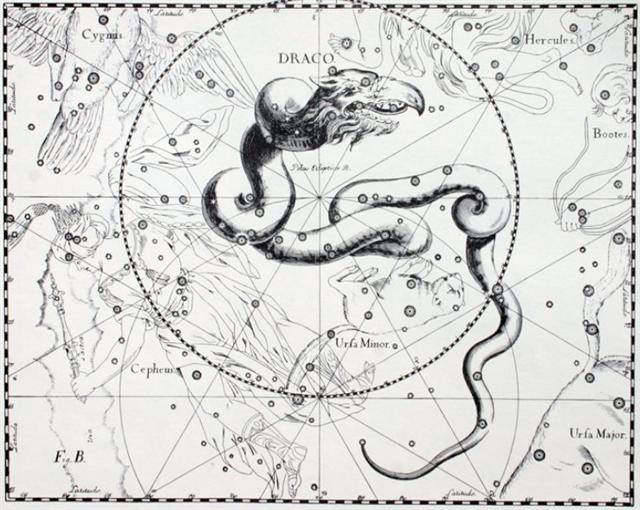
... Thuban had
been the star at the North Pole when the great
Egyptian pyramids where built ... The star could be
seen, both by day and night, from the bottom of the
central passage of the Great Pyramid of Cheops (Knum
Khufu) at Ghizeh, in 30° of north latitude, as
also from the similar points in five other like
structures; and the same fact is asserted by Sir
John Herschel as to the two pyramids at Abousseir
...
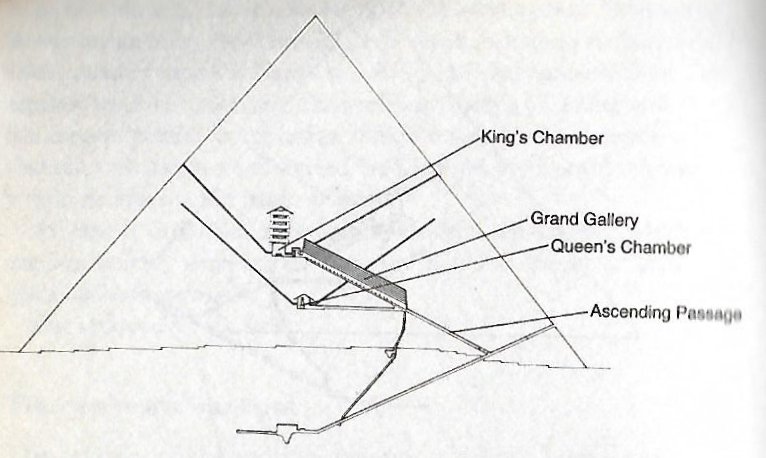
... For some
reason, too, it had taken their fancy to place the
Great Pyramid almost exactly on the 30th parallel at
latitude 29º 58' 51". This, a former astronomer
royal of Scotland once observed, was 'a sensible
defalcation from 30º', but not necessarily in error:
For if the original designer had wished that men
should see with their body, rather than their mental
eyes, the pole of the sky from the foot of the Great
Pyramid, at an altitude before them of 30º, he would
have had to take account of the refraction of the
atmosphere, and that would have necessitated the
building standing not at 30º but at 29º 58' 22'
... |
|
'Sept 20 (236 +
27) |
21 (264) |
Equinox |
23 |
24 (267) |
In 'September 22 (265) the Full Moon would have been half a year
away around day 265 - 183 = 82 ('March 22). Although the Julian
(northern) spring equinox had been located to day 265 - 181 = 84
('March 24). Possibly this was due to an influence (a reflection) of the
distance from Aldebaran ('May 1, 121) to
Antares ('October 29, 302).
However, more directly decisive should have been the location of
Sirius (like the tanist of daytime Sun)
at 'June 30 (181), because 181 - 121 =
60 as in the Babylonian
basic number corresponding to our 10.
|
'May 1 |
121 |
60 |
ALDEBARAN (*68) |
*33 |
|
'June 30 |
181 |
SIRIUS (*101) |
... Utnapishtim is spry enough to tell
[Gilgamesh] in great detail the story of the Deluge. He
tells how Enki-Ea has warned him of Enlil's decision to wipe
out mankind, and instructed him to build the Ark, without
telling others of the impending danger. 'Thus shalt thou say
to them: (I will ... go) down to the apsu and dwell
with Ea, my (lor)d.' He describes with great care the
building and caulking of the ship, six decks, one iku
(acre) the floor space, as much for each side, so that it
was a perfect cube [a sign of Saturn], exactly as Ea had
ordered him to do. This measure '1-iku' is the name of the
Pegasus-square, and the name of the temple of Marduk [the
spring sun god] in Babylon, as is known from the New Year's
Ritual at Babylon, where it is said: 'Iku-star, Esagil,
image of heaven and earth.'
But in the Sun calendar, defined from Sirius, the starry sky
dome of the night would then be pushed ahead in the year due
to the precession - i.e. the sky was apparently moving (ragi maeva):
|
May 1 |
121 |
60 |
BHARANI (*41 =
*68 - *27) |
*60 |
|
June 30 |
181 |
SIRIUS (*101) |
|
ki te henua - tagata honui |
391 |
te pahu |
|
 |
 |
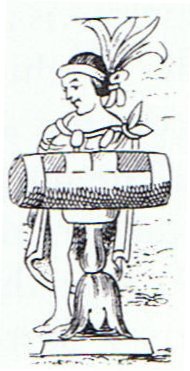  |
|
Ca1-6 |
Cb1-6 (6 +
392) |
|
λ Phoenicis (6.3),
β Tucanae (6.4)
*6.4 - *41.4 + *366.0 = *331.0
= *148.0 + '183.0 |
ξ¹ Ceti
(32.1) |
|
γ
Muscae (189.0),
AVIS SATYRA (Bird of the Satyrs) =
η
Corvi
(189.3),
ASTERION (Starry) =
β
Canum Ven.
(189.5),
KRAZ = β Corvi,
κ Draconis (189.7)
*331 - *183 = *148 = *189 - *41 |
Al Ghafr-13 (The Cover) /
Svāti-15 (Very Good) /
TAHUA-TAATA-METUA-TE-TUPU-MAVAE-6 (a pillar to
stand by)
15
Bootis
(215.2),
ARCTURUS =
α
Bootis
(215.4),
ASELLUS SECUNDUS (2nd Ass Colt) = ι Bootis
(215.5),
SYRMA (Train of the Virgin's Robe) =
ι
Virginis,
λ
Bootis (215.6),
η
Apodis (215.8)
*174.0 = *215.4 - *41.4 = *148 + *26 |
|
rutua
te maeva |
atua rerorero |
atua hiko ura |
hiko o tea |
|
Maeva. T. 1. Move.
Rangi-maeva = Moving Sky (name of a
marae). 2. Greet, greeting. Henry.
Rerorero.
1. To write, to draw; rerorero
i te igoa, to sign. 2. To rape. Vanaga.
To crush, to bruise. Churchill.
Hiko.
1. To ask (for something). 2. To filch, to
pilfer. Hikohiko, to snatch by force;
robbery by assault. Vanaga. Hikohiko keke,
hide-and-seek. Churchill. Pau.: 1. To glean.
Mgv.: kohi, to gather, to collect.
Ta.: ohi, to glean. Mq.: kohi,
id. Ma.: kohi, to gather. 2. Bamboo.
Mgv.: kohe, id. Ta.: ohe, id.
Mq.: kohe, id. Sa.: 'ofe, id.
Ma.: kohe, a plant name. 3. Diarrhea.
Ta.: ohi, dysentery. Churchill. Mgv.:
kohiko, a small bag mounted in the
fruit-picking fork.
Mq.: kohiko, a small net. Churchill. |
|
 |
 |
 |
 |
|
Cb1-7 |
Cb1-8
(400 = 366 + 34) |
Cb1-9 |
Cb1-10 |
|
γ,
δ
Trianguli (33.0),
χ
Persei (33.2),
10 Trianguli
(33.5),
θ
Arietis (33.3),
MIRA
(Astonishing) =
ο
Ceti
(33.7) |
No star listed (34) |
ξ Arietis (35.0),
ρ Ceti (35.4),
12 Trianguli
(35.8), ξ² Ceti (35.9)
*360.0 = *35.4 - *41.4 |
σ Ceti (36.9) |
 |
|
ι Lupi,
18 Bootis
(216.3),
KHAMBALIA (Crooked-Clawed) =
λ Virginis (216.4),
υ Virginis (216.5), ψ Centauri (216.6), ε
Apodis (216.8)
*175.0 = *216.4 - *41.4 |
ASELLUS PRIMUS (1st Ass Colt) = θ Bootis
(217.8) |
τ
Lupi,
δ
Oct. (218.1),
φ
Virginis (218.7)
FOMALHAUT (α Piscis Austrini) |
σ
Lupi (219.1),
ρ
Bootis (219.5),
HARIS (Keeper) = γ Bootis
|
|
ka higa te ao ko te
henua ra ma te hoi atua |
manu
rere - kua rere ga manu - ki te ragi |
|
Hoki. To
return, to go back, to
come back; ka hoki ki rá, go back
there! ana oho koe ki Hiva, e hoki
mai ki nei, if you go to the
mainland, do come back here again.
Vanaga. 1. Also, what; ki ra hoki,
precisely there; pei ra hoki,
similitude, likeness; pei ra hoki ta
matou, usage. P Pau.: hokihoki,
often. Mgv.: hoki, also, and,
likewise. Mq.: hoi, surely. Ta.:
hoi, also, likewise. 2. To
return, to turn back, to draw back, to
give back, to tack; mau e hoki mai,
to lend; hoki hakahou, to carry
back; hoki amuri, to retrograde;
hakahoki, to bring back, to send
back, to carry back, to restore, to
renew, to revoke, to remove, to dismiss,
to pay, to pardon, to compress;
hakahokia, given up; hakahokihaga,
obligation. P Pau.: hokihoki, to
persist, to insist; fakahoki, to
give back. Mgv.: hoki, to return,
to retrace one's steps; oki, to
return, to come back. Ta.: hoi,
to return, to come back. Ta.: mahoi,
the essence or soul of a god. Churchill.
Rere.
To jump; to run; to fly.
Rere-taúra, to carry a child astride
on one's shoulder: ku rere-taúra-á i
te poki e te matu'a ki te gao, the
mother carries her child astride her
neck. Vanaga. 1. To fly, to run, to
leap, to scale, to be carried away by
the wind; ika rere, flying fish;
rere aruga, to rebound; hetuu
rere, meteor, flying star.
Hakarere, to leap. P Pau.: rere,
to soar, to fly; fakarere, to
precede. Mgv., Ta.: rere, to fly,
to leap. 2. To come, to reach to. Mq.:
éé mai, to come. 3. To swerve, to
deviate. (4. Hakarere, to cease,
desist, postpone, quit, vacation; tae
hakarere, perseverance. Mq.: rere,
to disappear. 5. Hakarere, to
save, preserve, put, place, reserve,
burden, destine. 6. Hakarere, to
abandon, forsake, give up, depose,
expose, leave, omit, abjure, repudiate;
hakarere ki te hau, uncover the
head; hakarere ki te vie, to
divorce, hakarere ki raro, to put
down, tooa te kiko e ivi i hakarere,
to strip off the flesh. Mq.: éé,
to run away, to escape. 7. Hakarere?
Ikapotu hakarere, to abut, to
adjoin; e tahi hakarere,
synonym.) Churchill. Vi.: Lele,
the end of a branch farthest from the
body of a tree; leletha, to bend
a branch in order to gather the fruit on
it. Churchill 2. In the present phase of
Polynesian lele so much means to
fly that the plainest way of
particularizing birds is to describe
them as the flying animals, manulele.
But to manifest that flight, an exercise
or balancing of wings, was by no means
the primordial sense, for how could that
give rise to a description of water in
the water-courses? It will be no end to
mass the several significations which
lele exhibits ... Flight of birds
... Wind drive ... Meteors ... To leap
... To run ... Flow of water ... To swim
... To sail ... These several activities
are exercised in earth, air, and water.
The common factor is the swift motion.
The means of motion cut no figure. It is
an invisible means in the driving of the
wind, the flash of the meteor silent
athwart the sky on its lethal errand,
the slip and slide of the stream in its
deep course, the set of the sea, the
gliding of the canoe upon its surface.
Churchill 2. |
|
 |
 |
|
Cb1-11 (403) |
Cb1-12 (4 * 101) |
|
CLOSE TO THE SUN: |
|
27 (117 = 91 + 26) |
April 28 (118 = 4 * 29½) |
|
ν Ceti (37.9) |
ν Arietis (38.5), δ, ε Ceti (38.8) |
|
CLOSE TO THE FULL MOON: |
|
σ Bootis (220.2),
η Centauri (220.4)
*179.0 = *220.4 - *41.4 |
ρ Lupi (221.0),
TOLIMAN = α Centauri
(221.2), π Bootis (221.8), ζ Bootis
(221.9) |
|
Oct 27 (300 = 273 = 3 *
91) |
28 |
 |
|
eaha
te
nuku
erua |
koia
kua
huki |
e
niu
tu |
ki
te
ariki
- e
ka
hua
ra
tona
rima |
|
Huki
1.
Pole
attached
to
the
poop
from
which
the
fishing-net
is
suspended:
huki
kupega.
2.
Digging
stick.
3.
To
set
vertically,
to
stand
(vt.).
4.
Huki
á te
mahina,
said
of
the
new
moon
when
both
its
horns
have
become
visible.
Vanaga.
1.
To
post
up,
to
publish.
2.
To
cut
the
throat
(uki).
Mq.:
Small
sticks
which
close
up
the
ridge
of a
house.
Ha.:
hui,
the
small
uniting
sticks
in a
thatched
house.
Churchill.
Standing
upright.
Barthel.
M.
Spit
for
roasting.
Te
Huki,
a
constellation.
Makemson.
Hukihuki.
1.
Colic.
2.
To
transpierce,
a
pricking.
3.
To
sink
to
the
bottom.
Churchill.
Niu.
Palm
tree,
coconut
tree;
hua
niu,
coconut.
Vanaga.
Coconut,
palm,
spinning
top.
P
Pau.,
Ta.:
niu,
coconut.
Mgv.:
niu,
a
top;
niu
mea,
coconut.
Mq.:
niu,
coconut,
a
top.
Churchill.
The
fruit
of
miro.
Buck.
T.
1.
Coconut
palm.
2.
Sign
for
peace.
Henry.
The
sense
of
top
lies
in
the
fact
that
the
bud
end
of a
coconut
shell
is
used
for
spinning,
both
in
the
sport
of
children
and
as a
means
of
applying
to
island
life
the
practical
side
of
the
doctrine
of
chances.
Thus
it
may
be
that
in
New
Zealand,
in
latitudes
higher
than
are
grateful
to
the
coconut,
the
divination
sense
has
persisted
even
to
different
implements
whereby
the
arbitrament
of
fate
may
be
declared.
Churchill
2. |
 |
 |
 |
 |
|
Cb1-13 |
Cb1-14 |
Cb1-15 |
Cb1-16
(408) |
|
CLOSE
TO
THE
SUN: |
|
April
29 |
30 |
May
1
(121) |
2 |
|
μ
Arietis
(39.4),
HEAD
OF
THE
FLY
= 35
Arietis
(39.6),
KAFFALJIDHMA
(Part
of a
Hand)
=
γ
Ceti,
θ
Persei
(39.8)
*363.0
=
*39.4
-
*41.4 |
π
Ceti,
ο
Arietis
(40.0),
ANGETENAR
(Bend
in
the
River)
=
τ¹
Eridani,
μ
Ceti
(40.2),
RIGHT
WING
= 39
Arietis
(40.9) |
Bharani-2
(Yoni)
/
Stomach-17
(Pheasant)
π
Arietis
(41.2),
MIRAM
(Next
to
the
Pleiades)
= η
Persei
(41.3),
BHARANI
= 41
Arietis
(41.4),
τ²
Eridani,
σ
Arietis
(41.7) |
TA
LING
(Great
Mound)
= τ
Persei
(42.4)
*1.0
=
*42.4
-
*41.4 |
|
CLOSE
TO
THE
FULL
MOON: |
|
31
Bootis
(222.0),
YANG
MUN
(South
Gate)
=
α
Lupi
(222.1),
RIJL
AL
AWWA
(Foot
of
the
Barker)
=
μ
Virginis
(222.5),
ο
Bootis
(222.9) |
IZAR
(Girdle)
=
ε
Bootis
(223.0),
109
Virginis,
α
Apodis
(223.3),
μ
Librae
(223.8) |
Al
Zubānā-14a
(Claws)
/
Visakha-16
(Forked)
/
Root-3
(Badger)
ZUBEN
ELGENUBI
(Southern
Claw)
=
α
Librae
(224.2),
ξ
Bootis,
ο
Lupi
(224.5) |
KOCHAB
(Kakkab)
= β
Ursae
Min.
(225.0),
ξ
Librae
(225.7) |
|
Oct
29 |
30 |
31
(304) |
Nov
1
(121
+
184) |
In addition
to Polaris
there was
also the
older star
at the north
pole,
Kochab, to
consider.
For Kochab
was at the
same side of
the sky as
Thuban and
half a year
away from
Beltane:
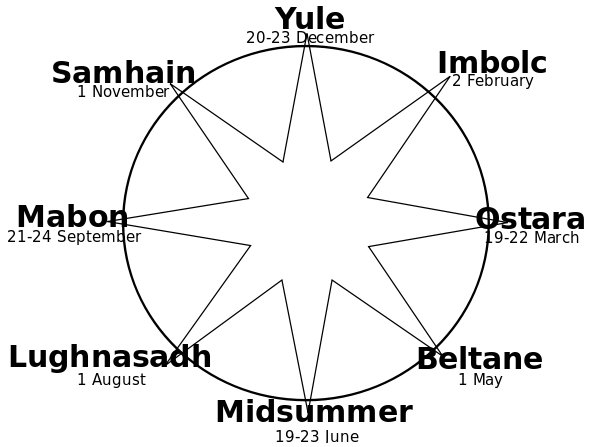
The current cardinal points of the Sun
were in December,
March, June, and September, but in the
collective memory of
the ancient places there were also preserved Beltane and Samhain, the
beginning and end of the ancient summer year (at the
equinoxes)
... In north Asia the common
mode of reckoning is in half-year, which are not
to be regarded as such but form each one
separately the highest unit of time: our
informants term them 'winter year' and 'summer
year'. Among the Tunguses the former comprises
6½ months, the latter 5, but the year is said to
have 13 months; in Kamchatka each contains six
months, the winter year beginning in November,
the summer year in May; the Gilyaks on the other
hand give five months to summer and seven to
winter. The Yeneseisk Ostiaks reckon and name
only the seven winter months, and not the summer
months. This mode of reckoning seems to be a
peculiarity of the far north: the Icelanders
reckoned in misseri, half-years, not in
whole years, and the rune-staves divide the year
into a summer and a winter half, beginning on
April 14 and October 14 respectively. But in
Germany too, when it was desired to denote the
whole year, the combined phrase 'winter and
summer' was employed, or else equivalent
concrete expressions such as 'in bareness and in
leaf', 'in straw and in grass' ...


together with Lughnasadh and
Imbolc at the ancient solstices. These 4 + 4
= 8 'corners of earth' (marking the octahedron
of Saturn)

might have
been referred to as 'the star' (Kakkab)
which then could be placed at the top of the
Niu
(Polynesian world tree).

This star ought
to be black because that
was the colour of Saturn.
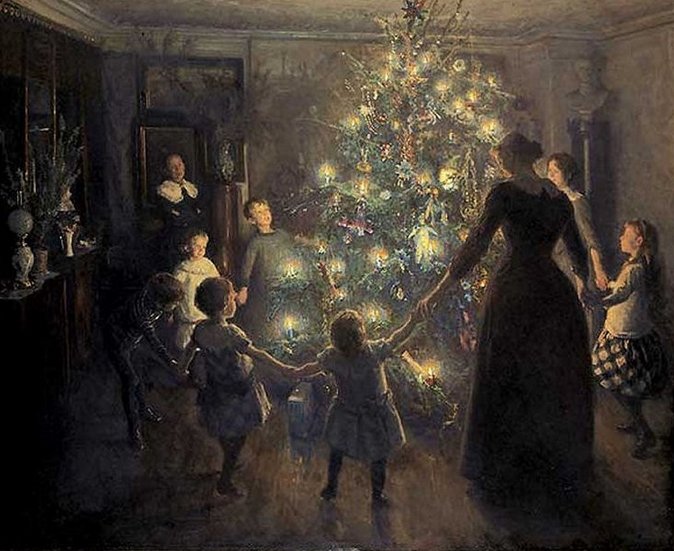
From Kochab up to
and including Polaris there were
168
(= 2 * 84 = 336 / 2) right ascension days. The
ariki
type of glyph seems to be a
construction similar to that of
niu,
although with the 'black star' upside down:
|
 |
 |
|
niu |
ariki |
|
e
niu
tu |
ki
te
ariki
- e
ka
hua
ra
tona
rima |
165 |
ka ke te
manu ki te maro |
Te ariki |
|
 |
 |
 |
 |
|
Cb1-15
(366
+
41) |
Cb1-16
(408) |
Cb8-11 |
Cb8-12 (183) |
|
BHARANI
(*41.4) |
Great Mound |
BENETNASH |
No star listed (209) |
|
Southern
Claw |
KOCHAB |
No star listed (25) |
POLARIS (*26.6) |
|
41 + 168
= 209 = 183 + 26 |
 |
|




























